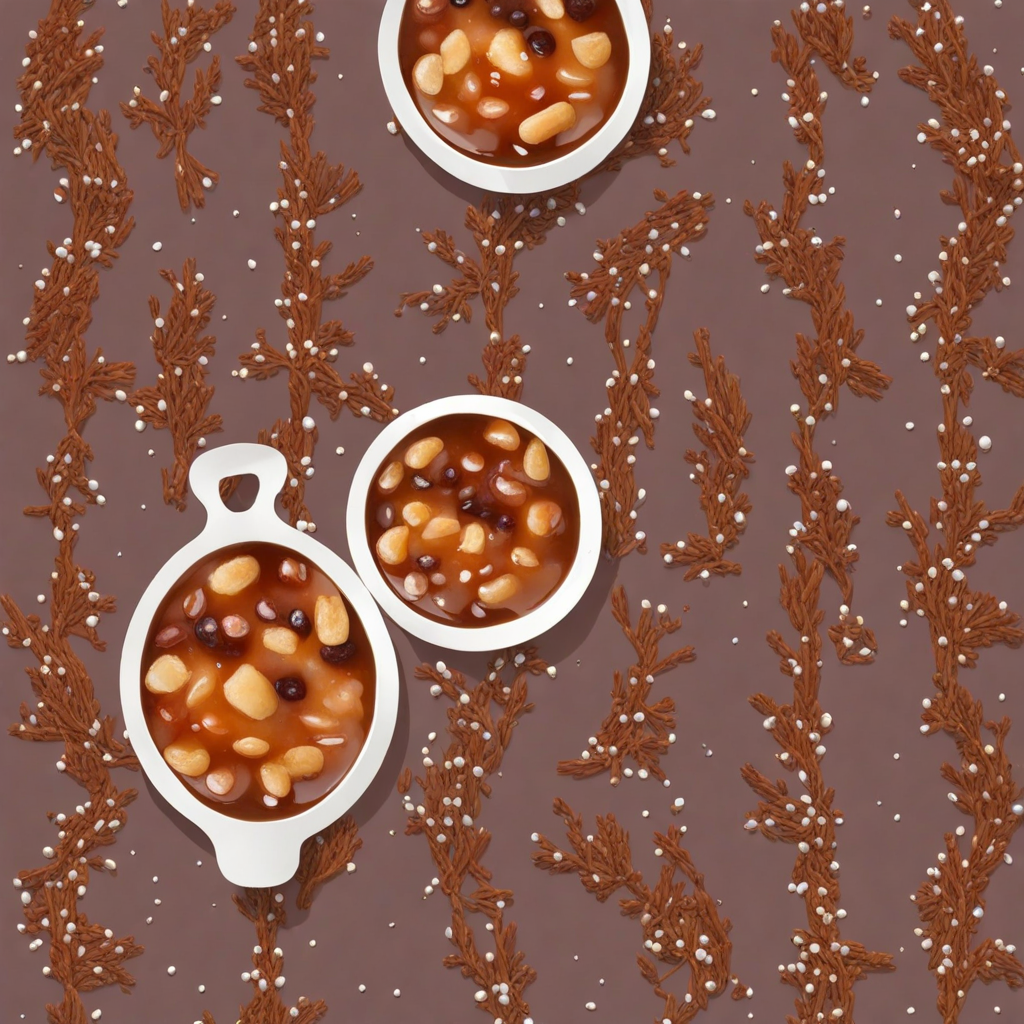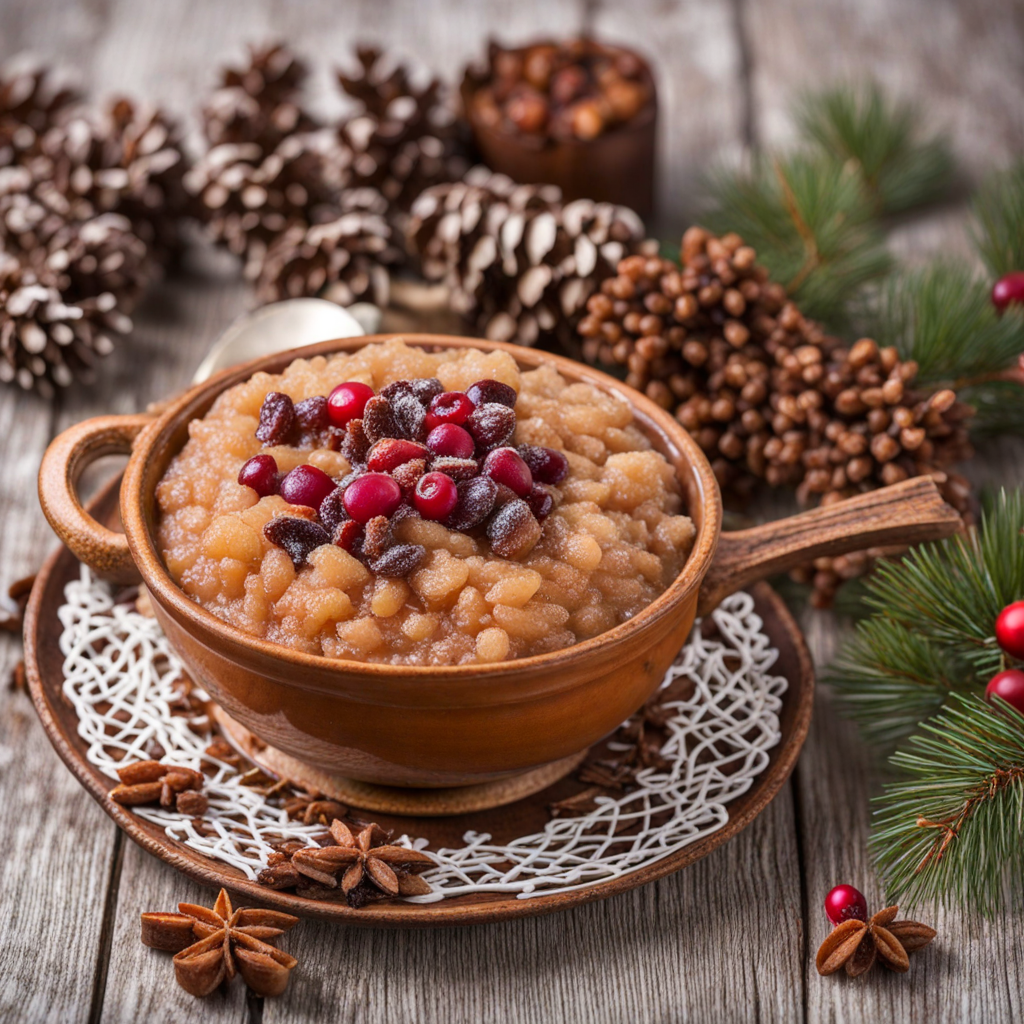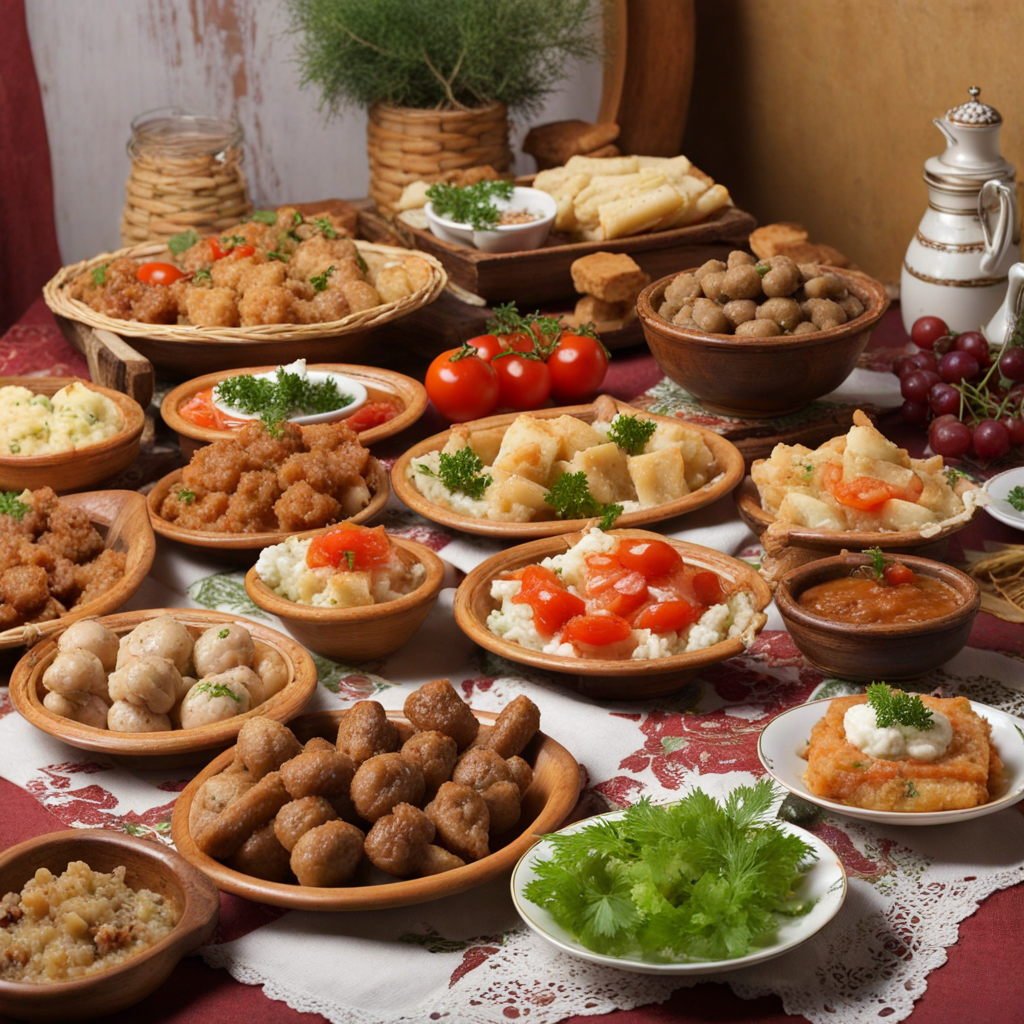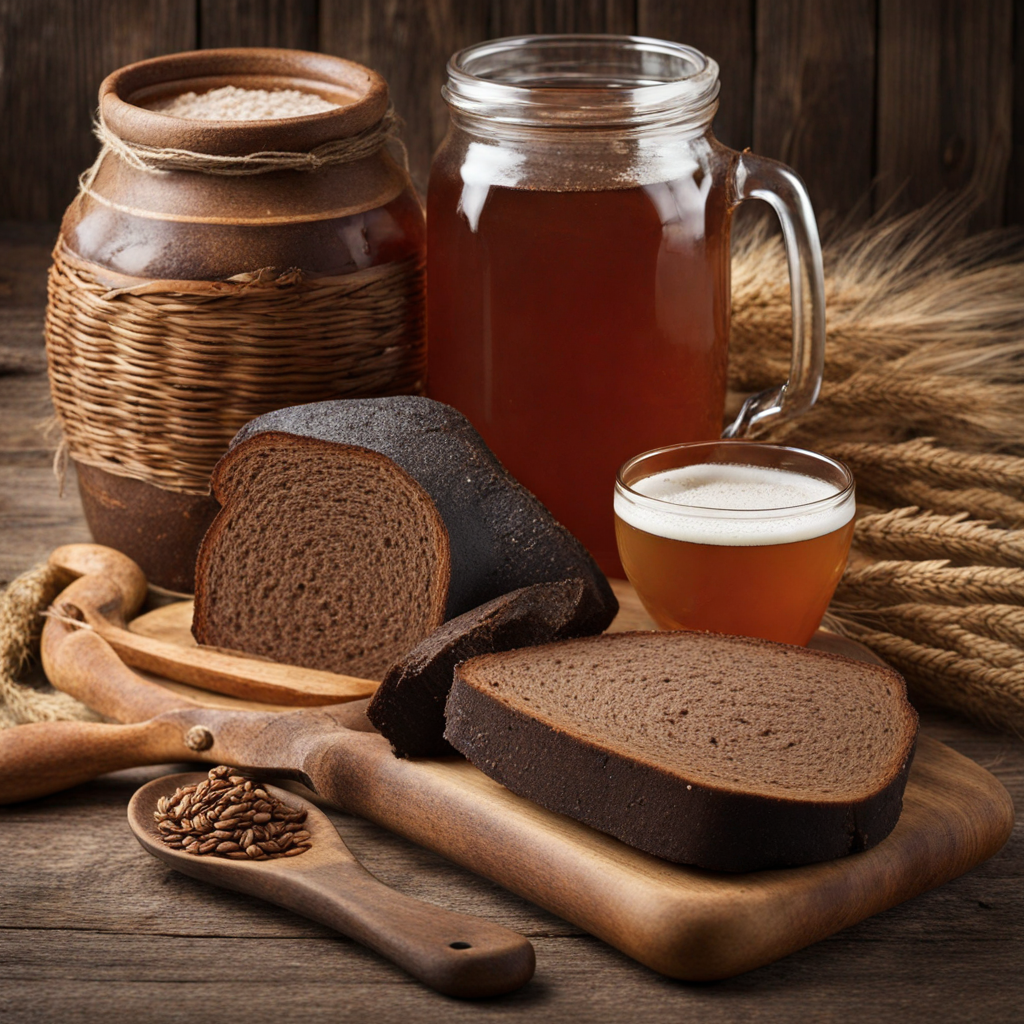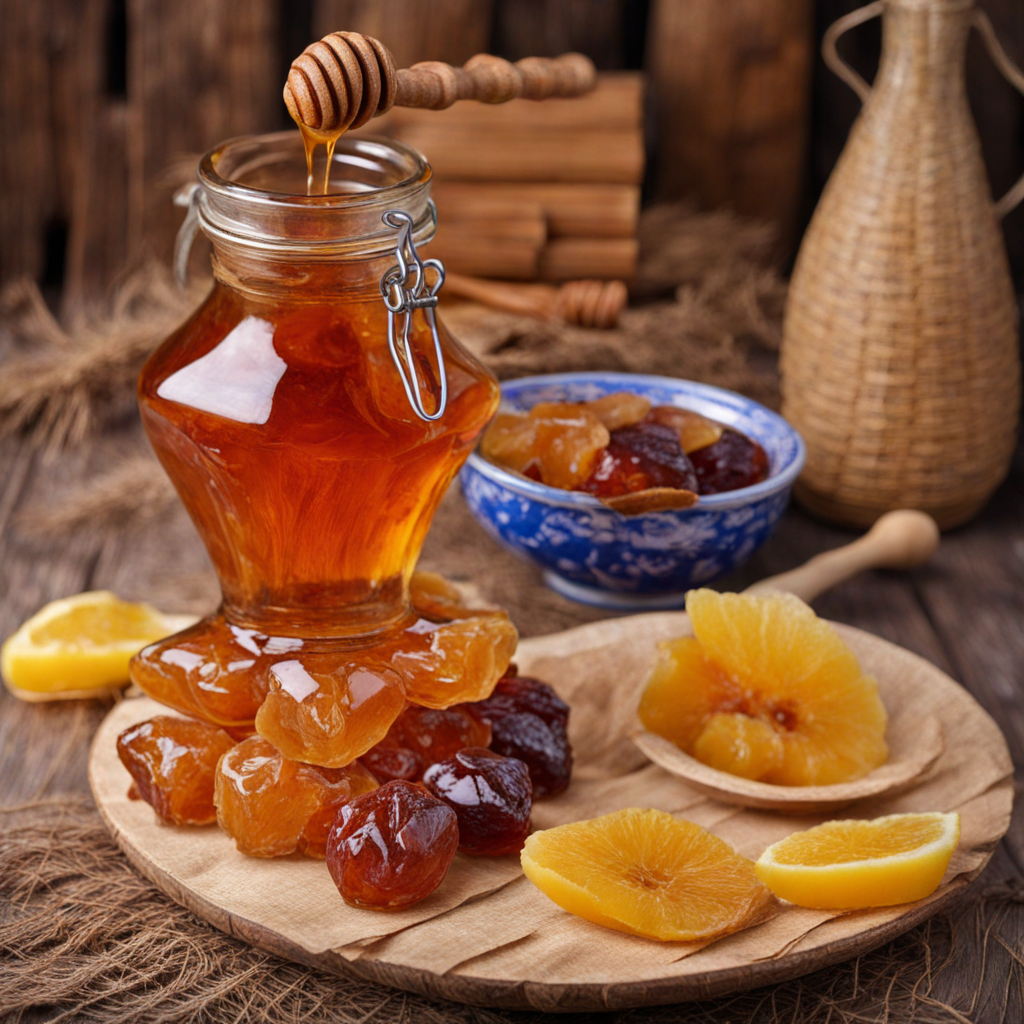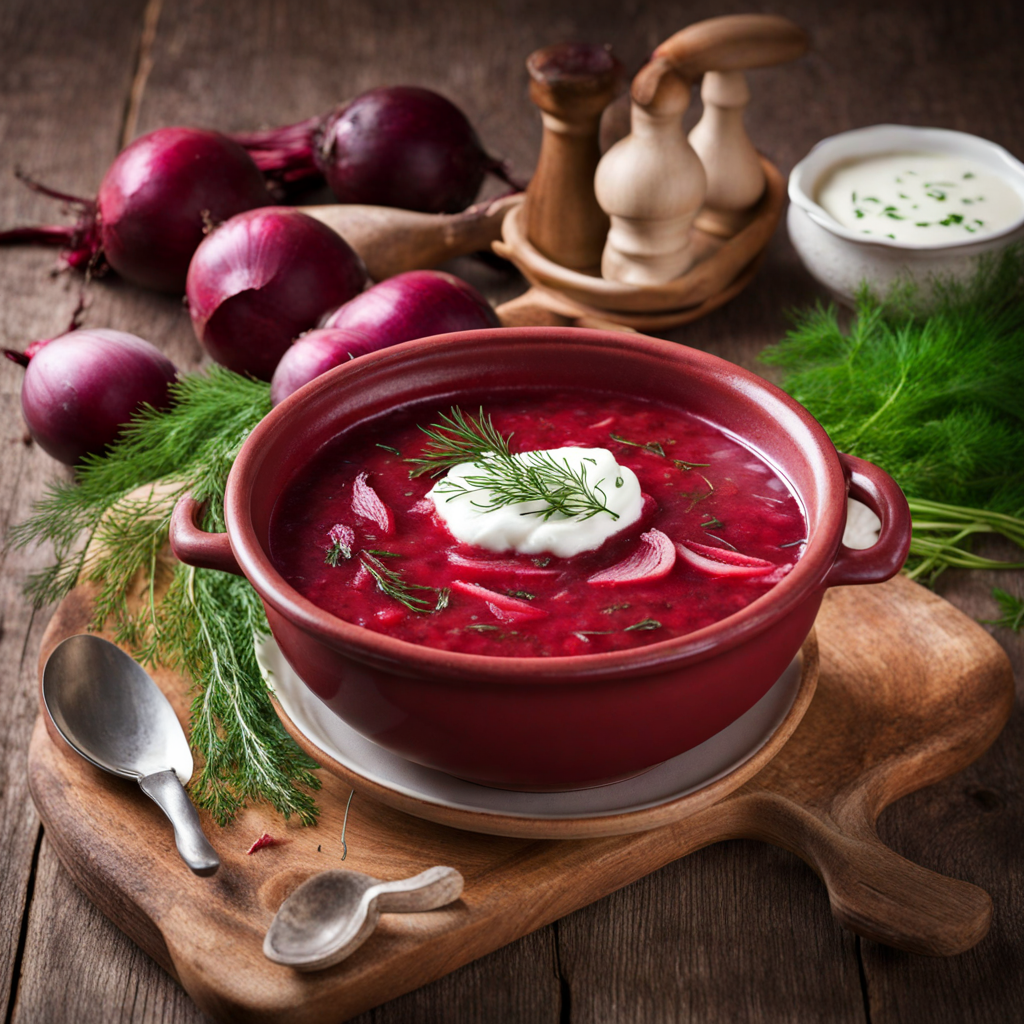Kutia
Kutia is a traditional Ukrainian dish that embodies the rich cultural heritage of the country, often served during festive occasions, particularly Christmas. At its core, Kutia consists of wheat berries that are boiled until tender, then mixed with a medley of other ingredients. The dish is typically sweetened with honey, which adds a delightful depth of flavor, while nuts—commonly walnuts—provide a satisfying crunch. Dried fruits, such as raisins or prunes, lend a natural sweetness and chewy texture, making each bite a harmonious blend of flavors and sensations. What sets Kutia apart is its symbolic significance; it represents the harvest and the hope for prosperity in the coming year. The combination of wheat, honey, and nuts is not only a treat for the taste buds but also a celebration of the bountiful gifts of nature. The dish is often garnished with poppy seeds, which add a nutty flavor and decorative appeal, enhancing the overall presentation. The contrast of sweet and nutty, along with the chewy and crunchy textures, makes Kutia a truly unique culinary experience. When served, Kutia is often presented in a decorative bowl, inviting guests to partake in this communal dish. Eating Kutia is more than just indulging in a dessert; it is a ritual that brings families and friends together, symbolizing unity and shared blessings. Whether enjoyed during a holiday feast or as a special treat, this dish leaves a lasting impression, offering a taste of Ukraine's rich culinary traditions and the warmth of its hospitality.
How It Became This Dish
Кутя: A Culinary Symbol of Ukrainian Heritage Origins of Кутя Кутя (Kutia) is a traditional Ukrainian dish that holds deep-rooted cultural significance, particularly during the Christmas season and on significant religious occasions. Its origins can be traced back to ancient Slavic rituals, where grains were often associated with fertility, abundance, and the cycle of life. The primary ingredient in Кутя is wheat or barley, which symbolizes the harvest and sustenance, reflecting the agrarian lifestyle of early Slavic communities. The word "Кутя" is derived from the Old Slavic term “kŭtĭ,” which means “to gather.” This etymology highlights the dish's role in communal and family gatherings, especially during the winter solstice and Christmas celebrations. Originally, Кутя was not just a meal but a ceremonial dish, prepared as an offering to ancestors, gods, and spirits, reflecting a deep connection between food, spirituality, and the cycle of life. Cultural Significance Кутя is often served on Christmas Eve, as part of the Sviata Vecheria (Holy Evening) meal, which consists of twelve dishes symbolizing the twelve apostles. It marks the end of the Advent period and is a way for families to honor their ancestors and the departed. Traditionally, Кутя is made with boiled grains, honey, and poppy seeds. Variations may include other ingredients such as nuts, dried fruits, and spices, depending on regional customs and family recipes. The preparation of Кутя is steeped in symbolism. For instance, the grains signify the resurrection and eternal life, while honey represents sweetness and the joy of life. Poppy seeds, often included, symbolize fertility and prosperity. When served, Кутя is typically placed in a bowl adorned with a special cloth, and it is common for family members to take a spoonful to honor their ancestors before the meal begins. This ritual emphasizes the importance of familial bonds and the respect for those who came before. Moreover, Кутя has transcended its role as merely a festive dish; it symbolizes unity and continuity within Ukrainian culture. Its preparation and sharing foster a sense of community, as families gather to cook and enjoy the dish together, passing down recipes and traditions through generations. Development Over Time Historically, Кутя has evolved in terms of ingredients and preparation methods, reflecting the broader changes in Ukrainian society. In ancient times, the dish was simplistic, primarily featuring grains and natural sweeteners, as these were readily available to the agrarian population. Over the centuries, as Ukraine faced various cultural and political influences—from the Byzantine Empire to the Polish-Lithuanian Commonwealth and the Russian Empire—the ingredients and cooking methods adapted accordingly. During the 19th century, as Ukraine began to develop its national identity amidst foreign rule, Кутя became a symbol of Ukrainian heritage and resistance. It was during this period that many Ukrainian intellectuals and artists sought to preserve and celebrate traditional customs, including culinary practices. Cookbooks from this era began to document the preparation of Кутя, emphasizing its importance in Ukrainian culture. These texts not only included recipes but also highlighted the ritualistic aspects of the dish, reinforcing its role in family and community gatherings. In the 20th century, particularly during the Soviet era, the preparation of Кутя faced challenges as traditional practices were often suppressed in favor of state-sponsored ideologies. Nevertheless, Ukrainian families continued to make Кутя, preserving its significance even in the face of adversity. It became a means of cultural expression and resistance, a way for families to maintain their identity amid external pressures. With Ukraine's independence in 1991, there was a resurgence of interest in national traditions, including culinary practices. Кутя gained renewed recognition as a symbol of Ukrainian heritage, often featured in celebrations of national pride and cultural identity. Modern variations of the dish have emerged, incorporating ingredients like cranberries or walnuts, reflecting contemporary tastes while honoring traditional roots. Modern Interpretations and Global Recognition Today, Кутя is not only a staple of Ukrainian Christmas celebrations but also a dish that has caught the attention of food enthusiasts and culinary experts around the world. As Ukrainian cuisine gained popularity on the global stage, Кутя has been featured in international food festivals, cookbooks, and culinary showcases, allowing more people to connect with Ukrainian culture through its rich culinary heritage. In contemporary kitchens, chefs are experimenting with Кутя, infusing it with modern flavors while preserving its essence. Some are introducing gluten-free grains or alternative sweeteners to cater to diverse dietary preferences, showcasing the adaptability of this ancient dish. The core ingredients remain, but the presentation and accompanying elements have evolved, reflecting global culinary trends. Moreover, the global Ukrainian diaspora has played a vital role in keeping the tradition of Кутя alive. Ukrainian communities around the world continue to celebrate their heritage by preparing Кутя during Christmas and other significant occasions, ensuring that this traditional dish remains a living part of their culture. Conclusion Кутя is more than just a dish; it is a rich tapestry of history, culture, and tradition woven into the fabric of Ukrainian identity. From its ancient origins as a ceremonial offering to its modern-day interpretations, Кутя embodies the resilience and continuity of Ukrainian culture through the ages. Whether enjoyed in a modest village home or a bustling city, Кутя remains a poignant reminder of the importance of family, community, and the enduring connection to one’s roots. As we continue to explore and appreciate the diverse cuisines of the world, Кутя stands out not only as a culinary delight but as a significant cultural artifact that tells the story of a people—celebrating their past, honoring their ancestors, and embracing their future.
You may like
Discover local flavors from Ukraine


